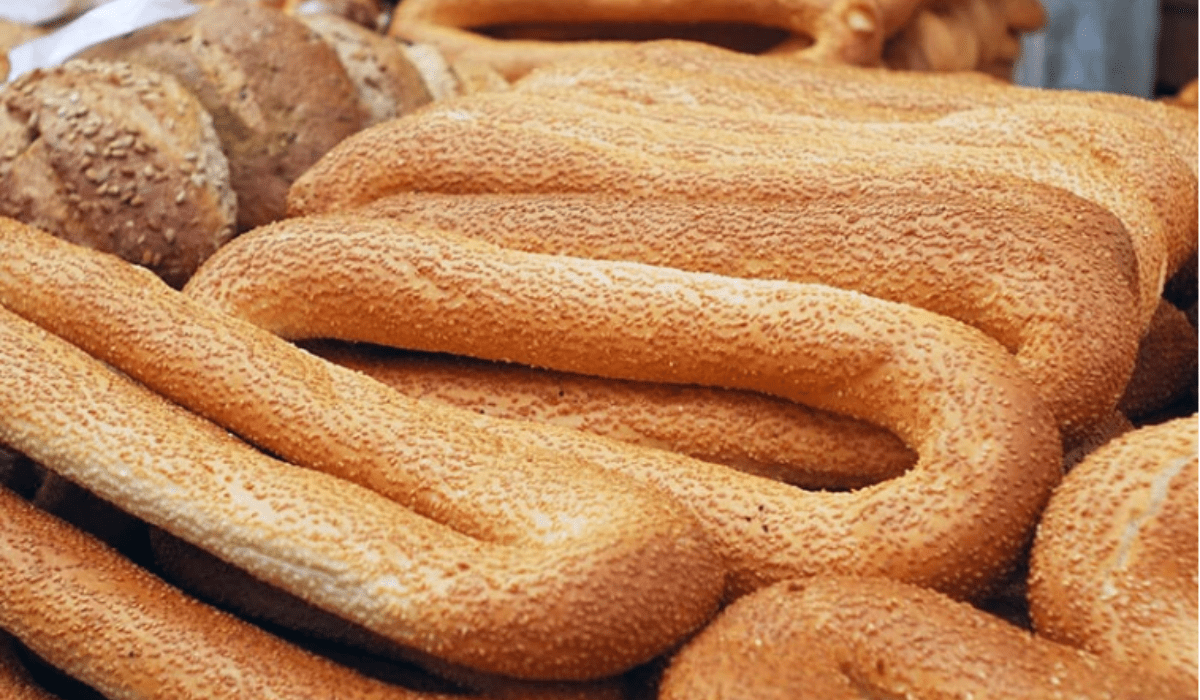Embark on a sensory journey through the Levant with “Ka’ak,” a traditional bread that transcends its humble origins to become a symbol of culinary craftsmanship. Ka’ak is not just bread; it’s a celebration of culture, history, and the comforting aroma of sesame-kissed rings that have graced the tables of the Levant for generations. Join us for a delightful exploration of this iconic baked treat.
Food Region & History
Ka’ak has deep roots in Levantine cuisine, spanning countries such as Lebanon, Syria, Jordan, and Palestine. This circular bread has a rich history, often associated with cultural festivities and special occasions. Whether enjoyed as a breakfast staple or paired with tea during social gatherings, Ka’ak embodies the essence of Levantine hospitality and the time-honored traditions of bread-making.
Ingredients
Embark on a flavor-packed journey with the carefully selected ingredients that compose our Ka’ak:
- All-purpose flour
- Olive oil
- Sesame seeds
- Sugar
- Active dry yeast
- Warm water
- Salt
- Anise seeds (optional, for added flavor)
Instructions
- Activate the Yeast:
- In a bowl, dissolve sugar in warm water and add active dry yeast. Allow the yeast to activate and become frothy.
- Combine Ingredients:
- In a large mixing bowl, combine all-purpose flour, olive oil, salt, and the activated yeast mixture. Knead the dough until it becomes smooth and elastic.
- Let the Dough Rise:
- Cover the dough with a damp cloth and let it rise in a warm place until it doubles in size, allowing the yeast to work its magic.
- Shape into Rings:
- Divide the risen dough into portions and shape them into rings, either by forming a circle or twisting the dough into a knot-like structure.
- Sesame-Coating:
- Brush the surface of each Ka’ak ring with water and generously coat it with sesame seeds, ensuring they adhere to the dough.
- Bake to Perfection:
- Place the sesame-coated Ka’ak rings on a baking sheet and bake until they achieve a golden-brown color and a delightful aroma fills the kitchen.
- Optional Anise Seeds:
- For a subtle hint of anise flavor, you can incorporate anise seeds into the dough during the kneading process.
- Serve Warm or Toasted:
- Enjoy Ka’ak warm from the oven or toasted, savoring the nutty aroma of sesame and the delightful texture of this Levantine bread.
Nutritional Benefits
Ka’ak offers a wholesome combination of carbohydrates from flour, the richness of olive oil, and the nutty goodness of sesame seeds, creating a delightful and satisfying bread.
Conclusion
Ka’ak is more than a bread; it’s a voyage through Levantine heritage, a testament to the art of bread-making and the simple joys of sharing a timeless treat. Whether enjoyed with a spread of labneh, dipped in olive oil, or savored on its own, Ka’ak invites you to experience the warmth and flavor of Levantine tradition.

